Interview with Daniel Wegan
1April 9, 2013 by Ville Raivio
‘I’m 30 years old and I make shoes. I don’t have much of an education. Just 9 years of Swedish Primary school and 3 years after that to become a zookeeper. I was quite into exotic animals in my youth and couldn’t think of anything better to do at the time. Turned out to be a waste of time. I´m single without children. In the past my job and clothing passion has probably been attractive to people. Once they realized these things have more importance to me than they, the relationships usually come to an end. My Mother quite likes my passion for clothing and is happy that I’m doing well as a shoemaker. I think every mother would like to see their son dress well. She does get a bit worried that I’ll run out of money one day. Thankfully, I work quite a lot so I haven’t gotten myself into trouble with any tailors yet.
Products from Pukimo Raivio
Ralph Lauren, Black Label suit, size 52EU
I think [my style interest] started in my mid 20’s when I got dumped by a girl and realized that if I was going to find a new one, I would have to do my best. Since I’m not a looker and my confidence was at an all time low, I guess I had to dress in a way that would help me. Obviously it didn’t really help much, but I did grow a love for clothing and shoes. After a while this passion turned into an obsession with a focus on shoes and how they were made. I think this must have been around 2007-2008, because in March 2009 I took a trip to London to ask the Bespoke shoemakers there how one would go about learning this trade. I also arranged to meet Dean Girling at his home in Norwich to speak to him about the possibility of an apprenticeship as a shoemaker.
Inspiration: suede handkerchief
It wasn’t anything I really planned to do. I tried to find an apprenticeship with many different firms in Europe, the only one that was willing to give me a chance was G&G. I met with Dean in March 2009, and in August, the same year, I moved to Kettering and started hanging out in the workshop every day and trying to make myself useful. I wasn’t really told how to do many things, but I learned from books, taking apart old shoes and from some useful advice here and there from people around the shop. They have both been generous and taught me a lot. They are both very busy men and time with them can be hard to come by.
When I started at G&G, I was to become a bottom maker and that’s the job that Dean has done for over 20 years so. It was natural that he was quite important to me, to get me going on the road to become a maker. The fact that Dean doesn’t live in Kettering made it quite natural that I spent more time with Tony, and I don’t think I could have had a better mentor and friend in the early stages of my shoemaking than him. Since the,n my job at G&G has changed a bit from being a full-time bottom maker. I am no longer employed as that, and have transitioned to working as a lastmaker and pattern cutter together with Tony Gaziano. This is something that I never planned for to happen, but the fact that Tony feels confident with me in this position is very flattering and humbling, and I hope that we can take the bespoke side of the business to the next level together.
I think [my knowledge] is a combination of all of those. My first real idea of what shoemaking was probably came from websites and blogs, but when I, in august of 2009, moved to Kettering in Northamptonshire to learn how to make shoes at Gaziano & Girling, I got to see shoes being made in real life. A much more tactile experience than the Internet can offer. During these last couple of years I have been given the opportunity to learn and study shoemaking from the craftsmen I admire most, and through their knowledge managed to create my own style of shoemaking by taking methods and aesthetics that suit my way of working, and my idea of beauty and elegance. I would also like to thank the authors of the books about shoe productions published in the late 1800’s and early 1900’s for their time, and also for presenting and attitude that today is lacking in the bespoke shoe trade. A humble, but confident way of relating to the work you do. Pride without being cocky.
My own style can be a bit schizophrenic. I think I want to dress one way, but tend to go for another. I like the idea of a grey British “Uniform” and I do my clothing like this. When I think about it, I am more comfortable in shades of brown and so on, though. I think it’s because I don’t like to look intimidating. Even if I love tailored clothing, and there is nothing I love more than these things, I don’t want to overdress, and when you don’t have any office job and only wear suits and shoes on your spare time, it can be hard to pull of without looking out of place. Because of this, I dress in things that are not very structured and I probably wear a bit too much color and too many patterns. I am slightly autistic and inside my head everything is very structured and clean, and if I dressed that way it would be too much, and therefore I dress in a way that I think is more like the person I would like to be, rather than the way I actually am. This is also the reason why I rarely polish my shoes. Right now [my favourite model] is balmorals. I’m also very fond of monk shoes.
I used to be quite an avid swingdancer before I moved to the UK and this is something I try my best to keep doing, even if I don’t have the amount of spare time to do it as much as I used to. Apart from that, there is not much else I care about. Shoemaking is a big enough universe to keep me entertained and working.
I’m sure most people give the same answers, but my recommendation would be to start building a wardrobe of classics: cap toe oxfords, a bal boot, a monk strap and so on. When I first started, my eye was often drawn to more flashy shoes but nowadays these rarely get as much wear as more traditional pairs. I would also like to recommend people to buy a few pairs of bespoke shoes, rather than plenty of high-end RTW. When I first started in this trade I thought 3000 – 4000£ was a lot of money, and was sceptical these shoes would be that different to a factory-made shoes. Now that I have been wearing bespoke shoes that we make in our workshop at G&G, I would argue that they are worth every penny. The combination of flex and structure, shape and comfort is supperior to any factory shoe.
Buy less shoes and better shoes. Things are not what you think they are and more complex than you want them to be. All bespoke shoes are not the same. Every company, and craftsmen, have their way of doing things. I think the most important thing people need to learn is that shoes, and the way things are made, are very, very different between different companies and even craftsmen within the same company. Maybe these differences are not that noticeable for most people. But they ARE different. I hear alot of people talking about weather bespoke shoes are worth the money or if they are different from high-end RTW, and what surprises me is that most of these discussions are between people who have never worn bespoke shoes, saying that it’s not worth the money. Personally, I think there are very few resemblances between the products. There are differences in the way they look, but the biggest diffrence is in the way they feel and how they age.’
http://www.gazianogirling.com/
Pictures: © Daniel Wegan
Category Cordwainers, Interviews, Northampton | Tags:

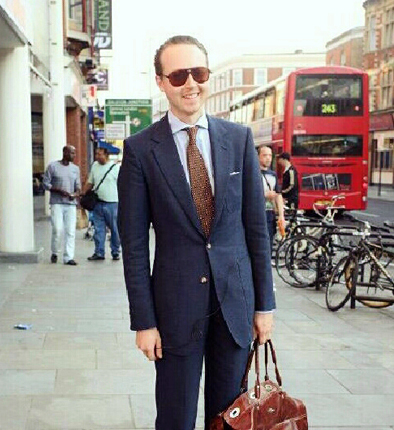
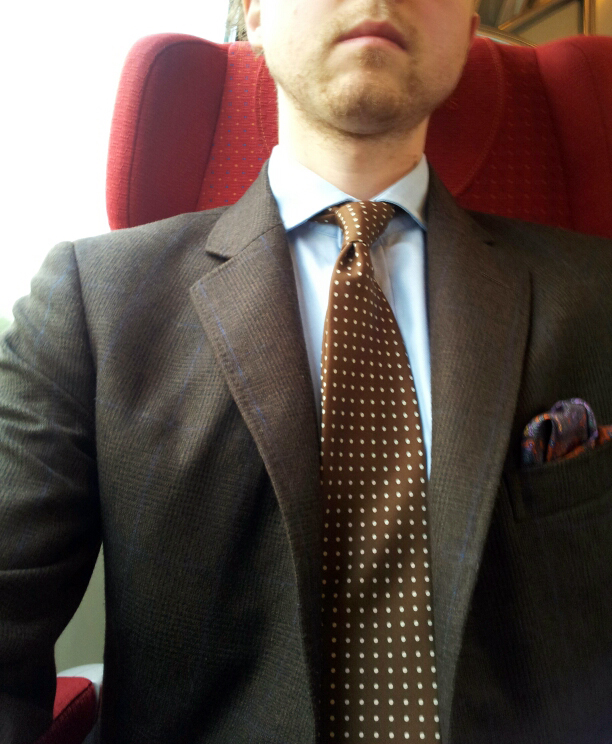
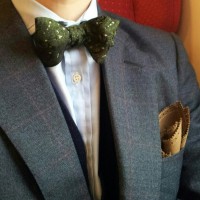
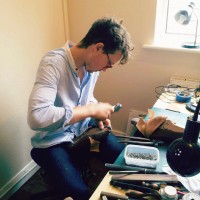
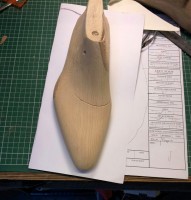
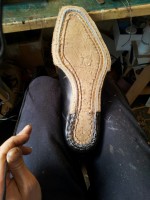
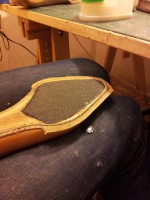
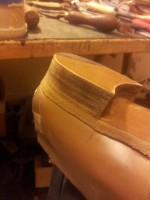
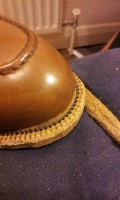
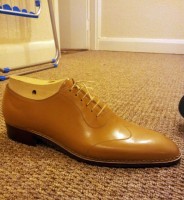
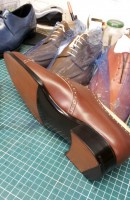
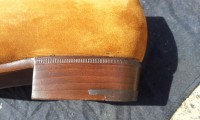
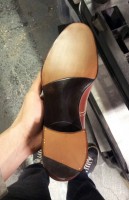
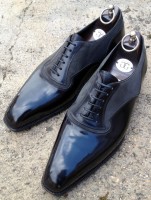
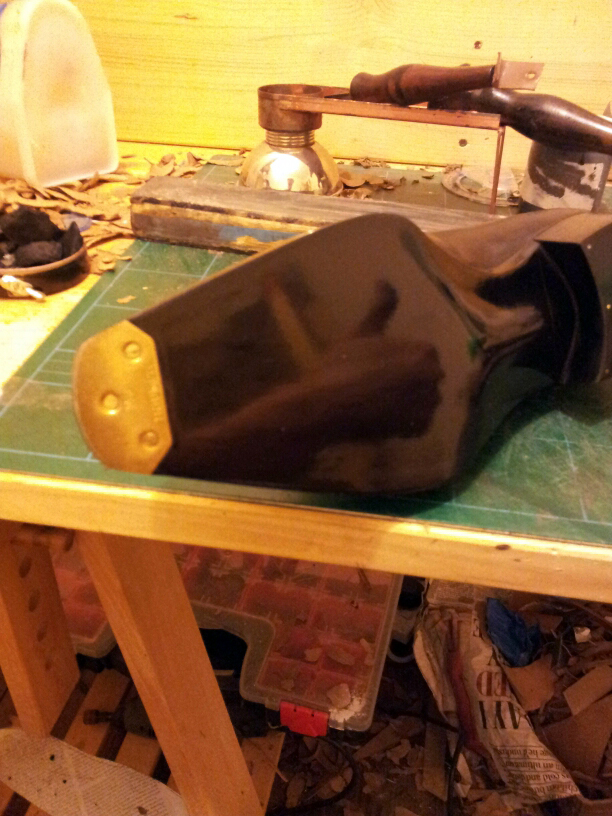


[…] Daniel Wegan in his interview with […]